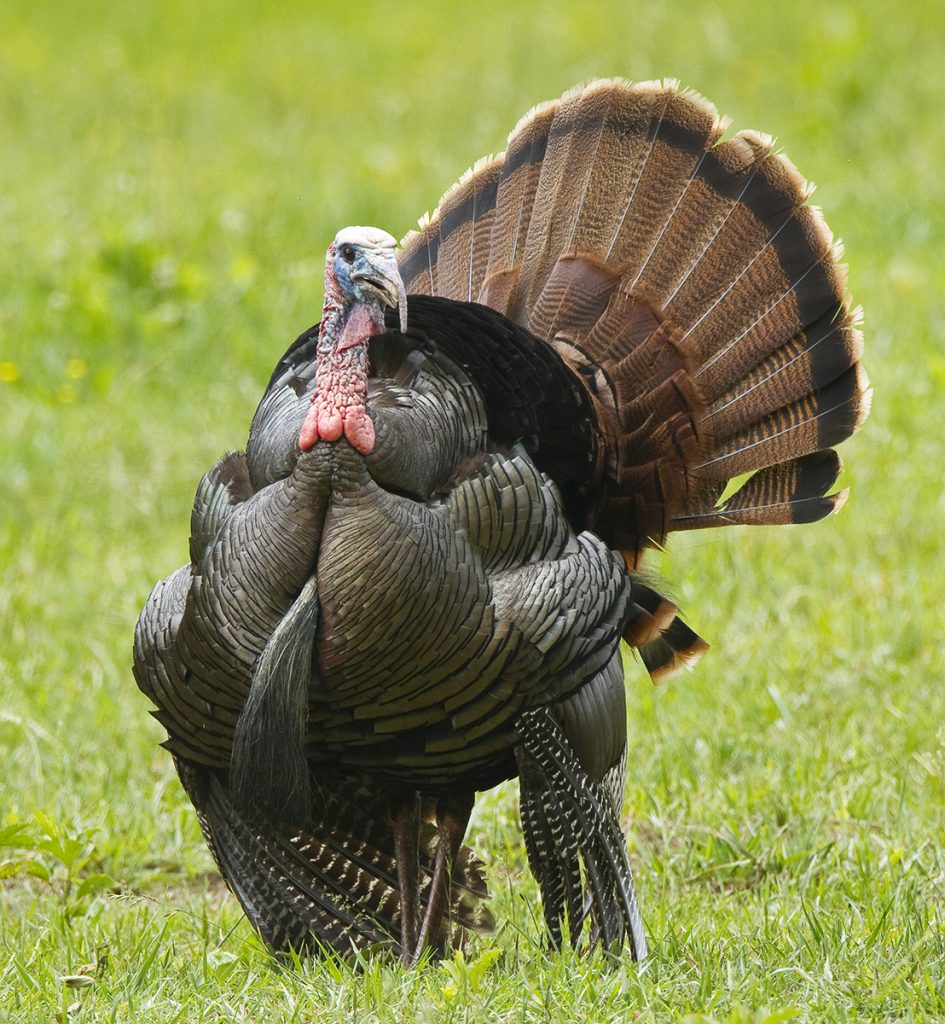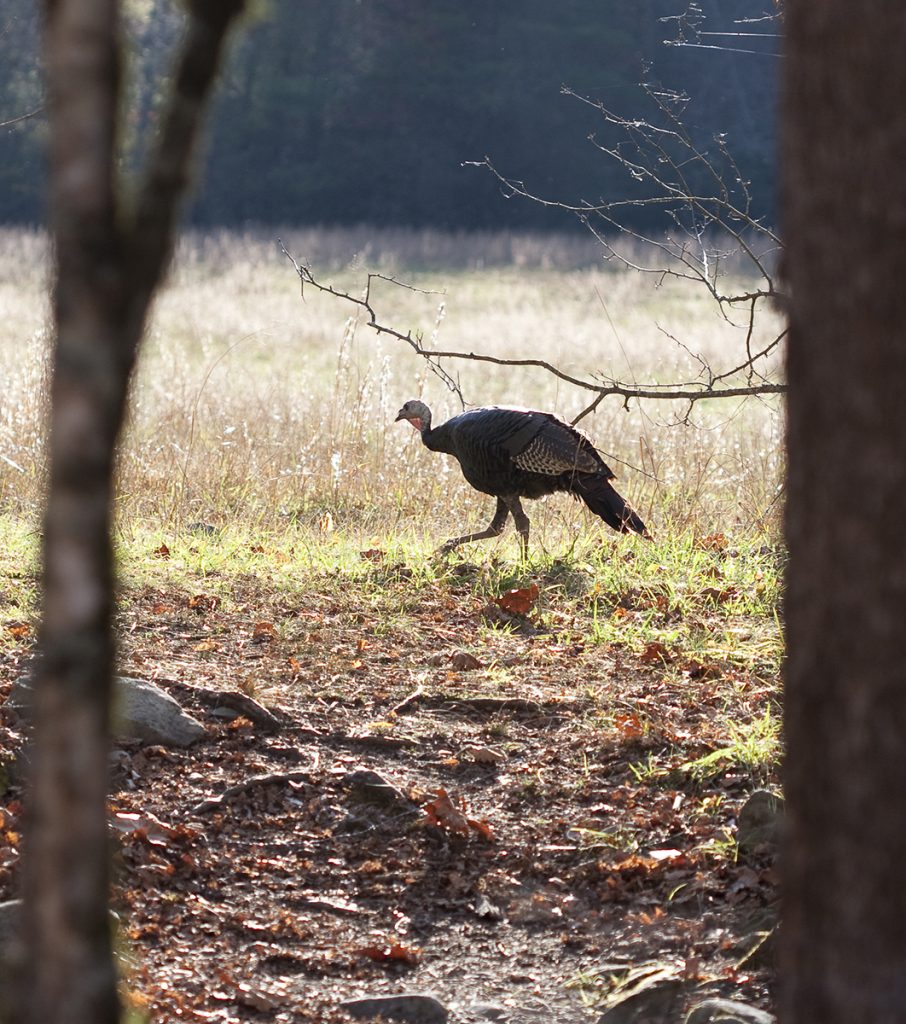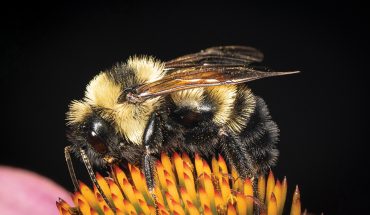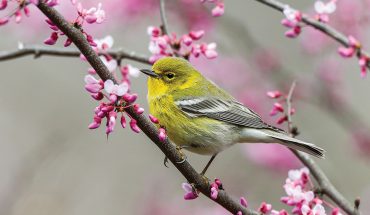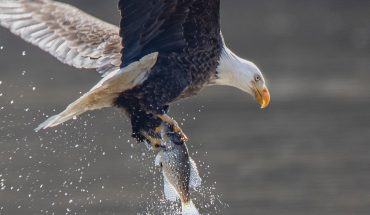This large game bird in North Carolina has a special place in our traditions — and some singular features, too.
Words and photographs by Mike Dunn
Walking through our wooded property, I occasionally see areas of leaves that appear to have been scratched or raked. Squirrels tend to rustle leaves in a small spot and deer scratching is usually a relatively narrow patch, so these broader scratch zones usually mean there’s been a special visitor to our woods: a wild turkey.
The first turkey I saw here was over a decade ago, early one morning. The turkey was huge! It ran down the road, quickly weaving from side to side, before it disappeared into the brush. Since then, I haven’t had any sightings, but my trail cameras have picked them up on a couple of occasions.
A turkey once stood right in front of one of the cameras for 15 minutes, preening and looking around the forest, before shaking its body and walking off. It’s good to know they are here, even if I don’t lay eyes on them myself.
Today, turkeys are fairly common in many places in North Carolina, but it wasn’t always that way. Wild turkeys were abundant when Europeans first arrived in our area. In his acclaimed description of his travels through our region in the early 1700s, A New Voyage to Carolina, explorer John Lawson described “meeting great Gangs of Turkies.”
He and his fellow travelers killed and ate so many turkeys that they “began to be loathsome to us.” But unregulated market hunting and habitat loss caused a steep decline in turkey numbers by the early 1900s.
Beginning in the 1950s, the NC Wildlife Resources Commission initiated a reintroduction program that has proven to be extremely successful. Eastern Wild Turkey populations in our state have increased from an estimated 2,000 birds in 1970 to over 270,000 today. They also rebounded in most other areas of the Eastern United States due to similar restoration efforts.
Turkeys have had many admirers over the years, perhaps the most famous being Benjamin Franklin. After the Bald Eagle was chosen as our national symbol, he wrote that it was “a Bird of bad moral Character” — in contrast to the turkey: “though a little vain & silly, a Bird of Courage.” Of course, many of us celebrate turkey as the traditional meal at Thanksgiving, but from what I’ve read, they were not on the menu on the fabled first Thanksgiving in 1621.
But due to their abundance in the wild, large size, successful domestication and good taste, they became a favorite holiday entrée in the United States by the mid-1800s. Today, wild turkeys are a popular game animal, second only to deer in terms of the number of hunters that pursue them. Wild turkeys are considered a difficult game bird because of their excellent eyesight, hearing and wariness.
Wild turkeys are both bizarre and beautiful birds. The beauty largely comes from their feathers. From a distance, male turkeys (gobblers or Toms) appear dark, while females (hens) are browner and duller. A Tom’s body feathers have black tips and are highly iridescent.
When seen up close in sunlight, they can have hues of bronze, copper, red, green and gold. During their spring mating season, gobblers can put on quite a display to impress the ladies: puffing their body feathers, raising the tail feathers into a vertical fan and strutting with wingtips dragging the ground. And there is the gobble, that well-known descending guttural call made by males. Turkeys strut and gobble not only to get the girls, but also warn other males to stay away from their turf.
Several years ago, we visited Cades Cove in Great Smoky Mountains National Park in May. It is renowned for its concentration of wildlife, especially bears, deer and turkeys. Being the mating season, we saw several Toms out in a field strutting their stuff. A few hens stood around and watched or kept on feeding while the males put on their best show. It really was an amazing display.
But as we watched, we soon noticed some of the things that make wild turkeys, especially the Toms, seem somewhat bizarre. A turkey’s head is featherless and sports some rather odd-looking (and strange-sounding) features.
Sitting atop their head is a fleshy protuberance called a snood. While both sexes have snoods, it is much longer (up to 5 or 6 inches) on a mature male, hanging down over its bill like a colorful, wrinkled wet noodle.
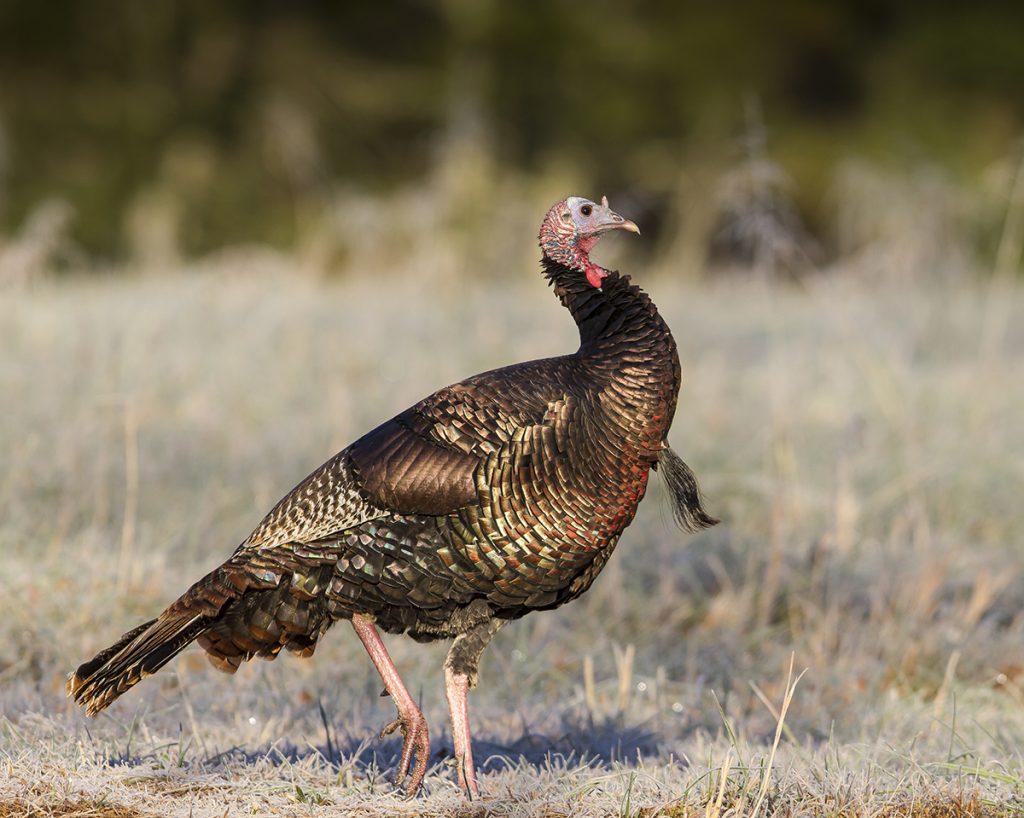
The snood can range in color from a pale white or gray to a rich blue, pink or red depending on the bird’s mood (this also applies to the bare skin on top of the head). During mating displays or aggressive interactions with other males, the skin colors are at their brightest.
Dangling underneath the chin is a loose flap of warty skin called a wattle. Birds can’t sweat like we do, so on a hot summer day, the bare skin of the head and neck and the wattle help release heat. But when it comes time to show off for the hens, extra blood moves in and turns the wattle a bright red.
Adding to the Tom’s “appeal” are fleshy bumps along the head and throat called caruncles. These warty features also change color, especially during mating displays.
A turkey’s head isn’t the only place with unusual bird body parts. Look at a strutting turkey and you will see what looks like a short black horse’s tail sprouting from its breast. This is the turkey’s beard, a tuft of coarse feathers that lengthens with age.
Finally, a glance at the somewhat reptilian-looking legs of a Tom shows a bony spike on the back of the leg called a spur. Though hens can have most of these features as well, they tend to be much less prominent.
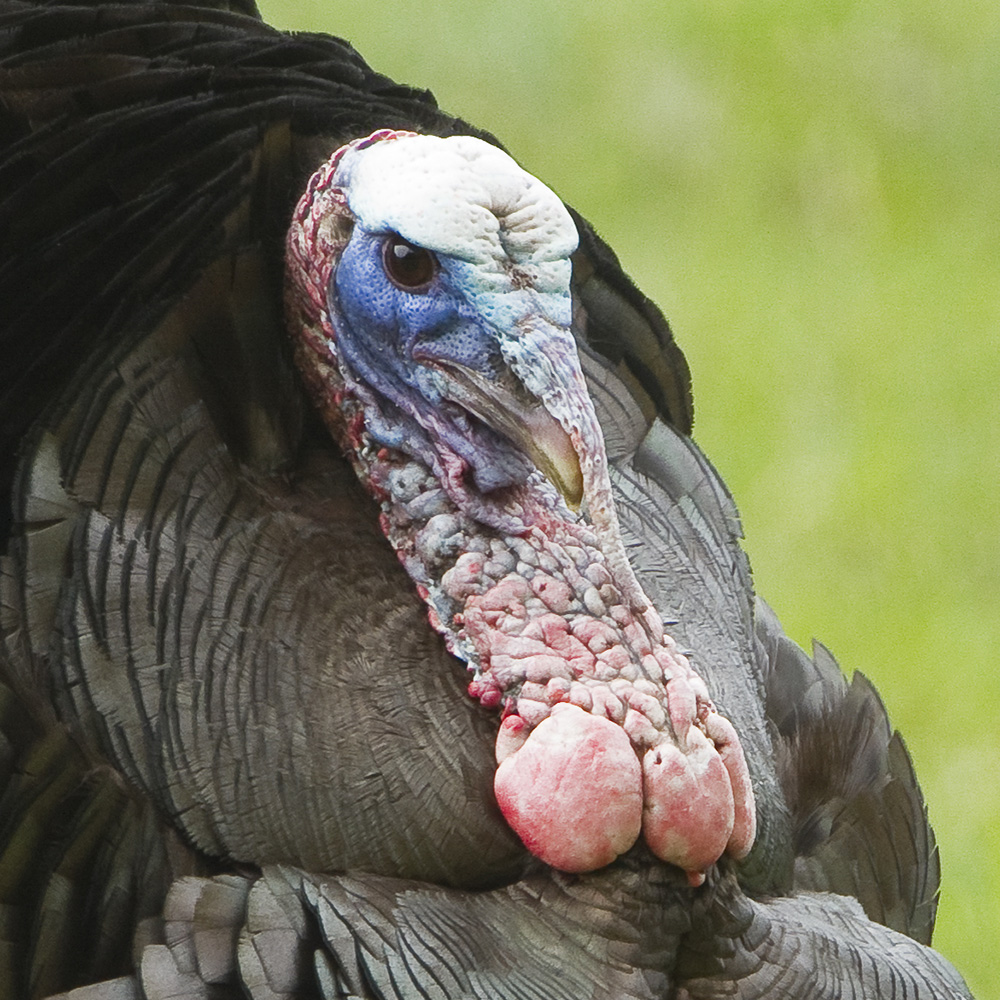
On a frosty morning in the mountains several years ago, I sat at the edge of a field hoping for a photograph of a bear or buck. Instead, as the sun crept over the ridgeline, two wild turkeys walked out behind me, pecking at the grasses for seeds or frozen bugs.
For the next 30 minutes, they stayed close, often just a few feet away. It was a rare front-row seat to the behavior and strange beauty of these magnificent birds. I can’t think of a better way to spend a November morning than admiring a bird that has played such an important role in our history and is now a symbol of a conservation success story.
This article originally appeared in the November 2023 issue of WALTER magazine.

